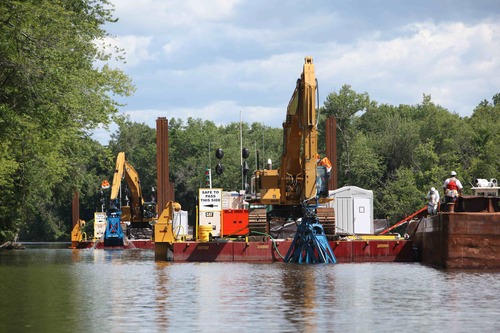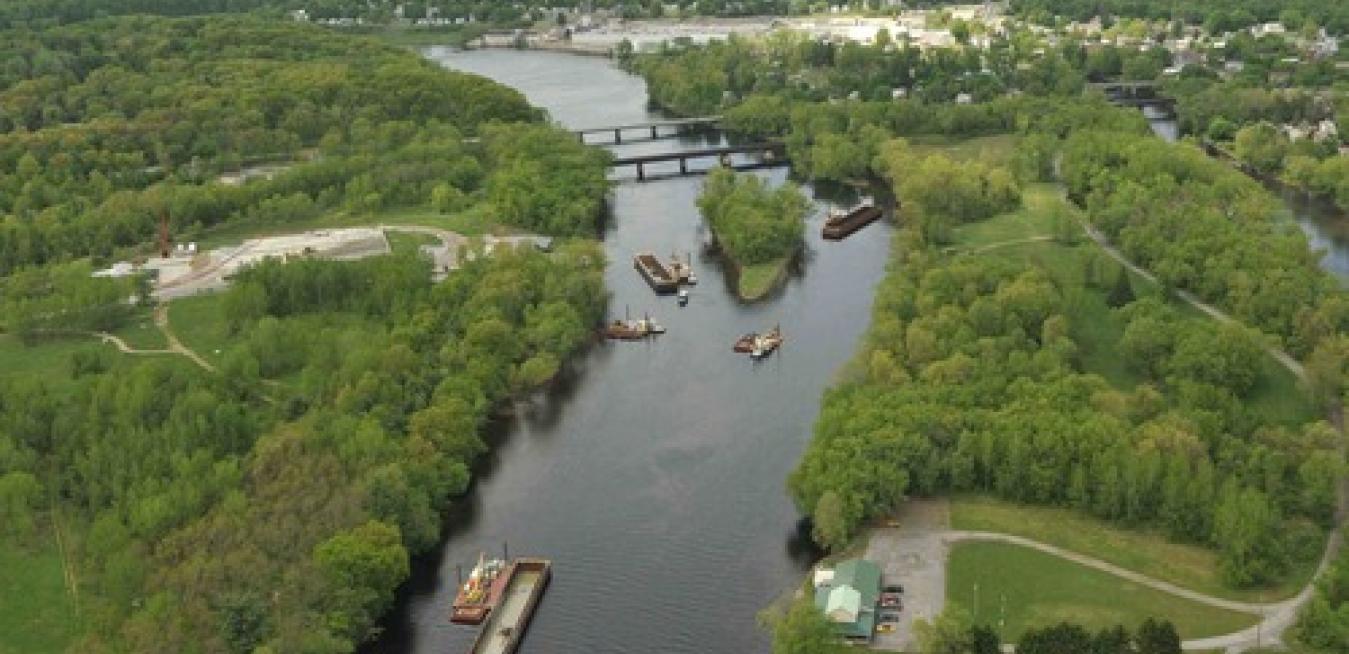GE is on track to finish one of the largest and most logistically complex environmental cleanups in U.S. history on a 40-mile stretch of the Hudson River.
The company has removed nearly 2 million cubic yards of sediment containing polychlorinated biphenyls (PCBs) from the New York State waterway since 2009.The project is due to conclude in 2016.
The U.S. Environmental Protection Agency, which is overseeing the project, has stated that the dredging is meeting its cleanup goals and protects human health and the environment.
In 2002, the EPA issued a decision that called for the removal of an estimated 2.65 million cubic yards of PCBs from 493 acres of the river.
GE used PCBs at its Hudson Falls and Fort Edward plants. The company held valid permits at all times necessary for discharging them to the river.
In 2005, GE assembled a technical team to address the challenges. They included taking over 60,000 samples from the riverbed to map the areas to dredge, customizing the dredging and sediment processing equipment, and building a 110-acre facility to process the sediments and load them for transport via rail to government approved landfills.

Dredging began in 2009. The engineers used 3-D virtual reality software dubbed “Nintendo,” a custom-built digital positioning system and other instruments to map the irregular bottom of the river and guide dredges to the precise locations of PCBs in sediment. The “Nintendo” allowed the equipment operators to virtually “see” the riverbed in real time and excavate the right sediment. A wireless data transmission system also simultaneously sent the data to engineers monitoring the progress of dredging.
The team integrated the software with the excavator’s hydraulic system. The resulting data allows workers to customize the details of the dredge plan based on actual performance and minimize the amount of “under- or over-dig.”
The operation generates nearly a terabyte of data every day. The team stores it in the cloud and makes it immediately accessible to crews managing the on-water efforts, at the office, and also at home. A core team of GE and EPA managers use it to determine the direction of the project for the next 24 hours.
GE has invested $1 billion in the cleanup project so far. Today the project involves more than 350 full-time employees, contractors and consultants. As many as 70 vessels are at work in the river during dredging operations. Thus far, those vessels have traveled more than 17,000 miles up and down the river.
As of December, GE had removed almost 2 million cubic yards of sediment, which is more than 70 of the total sediment targeted by the EPA. Workers also planted more than 600,000 native plants to restore aquatic river-bottom vegetation in areas that have been dredged.
GE is preparing to begin the fifth season of environmental dredging in the Upper Hudson River in May, and run it through October. It will include work on a two-mile section of the river inaccessible by boat. The team will use a crane to place smaller dredges and hopper barges into the water to remove 160,000 cubic yards of sediment.





